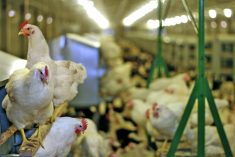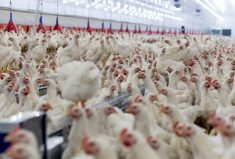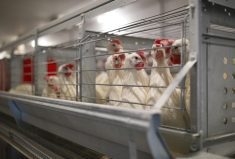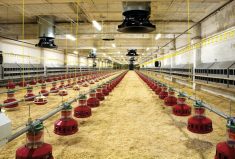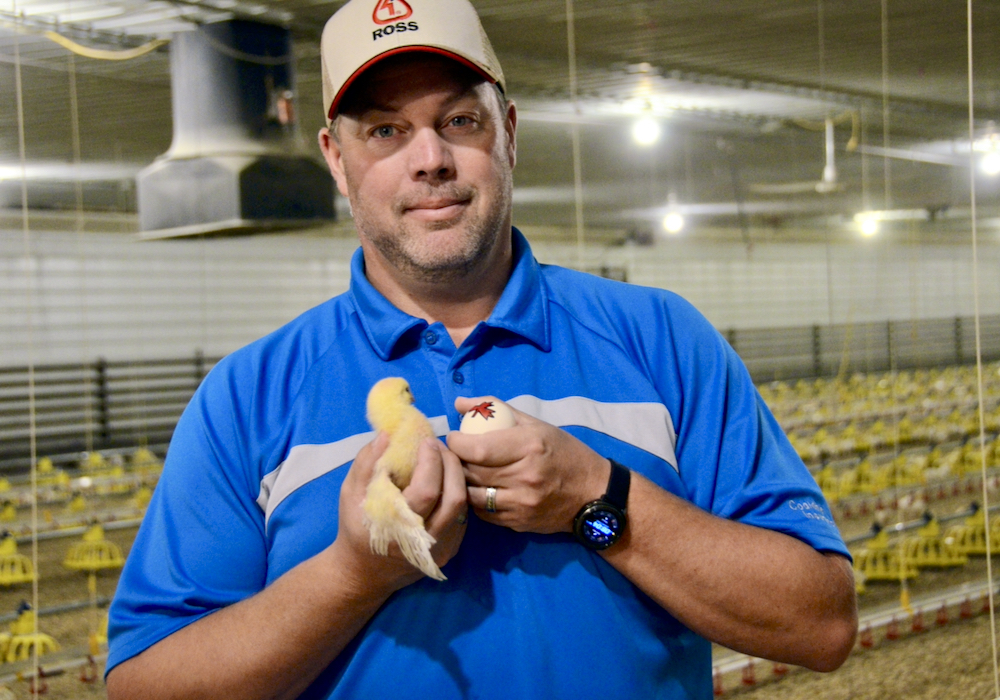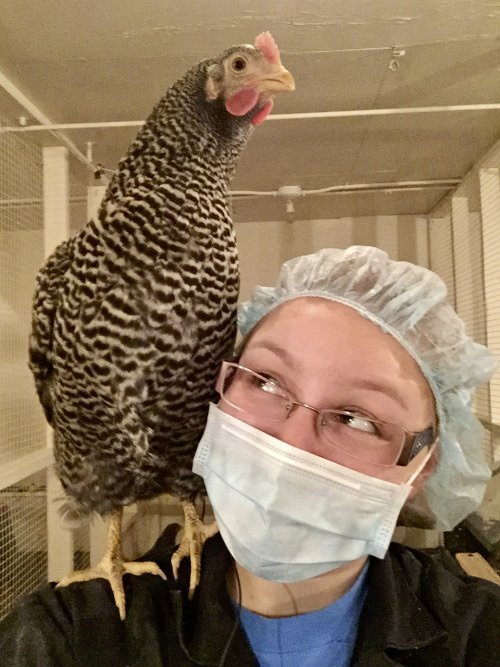University of Alberta researchers are only halfway through a precision feeding trial for broiler breeders — but the early results are promising.
“The system has done a great job at growing birds to the right weight,” said Martin Zuidhof, an associate professor at the University of Alberta.
Along with a team of electrical and mechanical engineers, the poultry systems expert developed the feeding system last year as part of a research project on improving broiler breeder performance through precision feeding.
“Every year, breeding companies are producing broiler chickens that grow faster and faster and faster,” said Zuidhof.
Read Also

Mosquito-borne virus could be devastating to sheep breeding operations
Cache Valley virus, a mosquito-borne disease that infects small ruminants, could be a devastating hit to small operations.
“The competition for feed, at the breeder level, is very high. Because feed is a scarce resource that’s competed for, it’s difficult to distribute it evenly amongst all the chickens in the flock.”
The broiler breeder industry has attempted to address that problem by “feeding bulkier diets so that there’s more feed to go around.”
But that system isn’t foolproof.
“We have a very difficult time getting the right amount of feed to the right bird, and we have flock uniformity issues,” he said. “The problem with flock uniformity is that birds don’t lay as many eggs when the flock isn’t uniform, because they’re not getting the right amount of feed or they’re not ready at the same time to start laying eggs.”
Targeted feeding
Zuidhof’s precision feeding system is attempting to work around that problem by only feeding underweight birds.
“That system weighs the broiler breeder before feeding time,” he said. “The bird goes into a station, gets its weight taken, and then if it’s less than the target that it’s supposed to be at, we give it a meal.”
And halfway through the 60-week feeding trial, the system seems to be working — at least as far as flock uniformity is concerned.
“A key part of the system is kicking the birds out when the meal is finished, and by doing that, we’ve been able to control body weight and grow birds on the body weight curves that we prescribe for them,” said Zuidhof.
Feed efficiency has also improved, he said.
“We’ve seen a four per cent increase in feed efficiency in the precision feeding system versus the conventional feeding system.”
That’s largely due to the frequency at which the birds are being fed.
“They’re fed any time they qualify for a meal — that is, any time their body weight is less than the target. We’re feeding them small meals multiple times a day,” he said.
Feeling peckish?
On average, the birds are eating eight small meals a day (versus one big one daily in a conventional system), and that allows them to make better use of their feed.
“The birds don’t have to store their energy and their nutrients and then mobilize it from their body stores,” said Zuidhof.
But egg production is what’s “really going to sell the system” for breeding companies, he added.
“They’re holding out to see the results of the laying phase — understandably. What we’re looking at is an expensive way to feed chickens, albeit very effective,” he said. “Production has to improve a lot for this to be economically feasible.”
Zuidhof expects that egg production “will improve a lot,” based on systems like those in Colombia and Brazil where workers manage birds on the basis of body weight.
“They put all the big birds together and feed them a little less, and they put all the small birds together and feed them a little more,” he said.
Because they manage the birds more intensively, “they do a tremendous job,” producing over 145 chicks per hen, while Alberta’s numbers are under 120 chicks per hen. Precision feeding should be able to make up some of that difference, said Zuidhof.
“That’s a 10 to 15 per cent increase in productivity that’s being left on the table currently, and I think the system can help extract some of that potential from the birds.”



